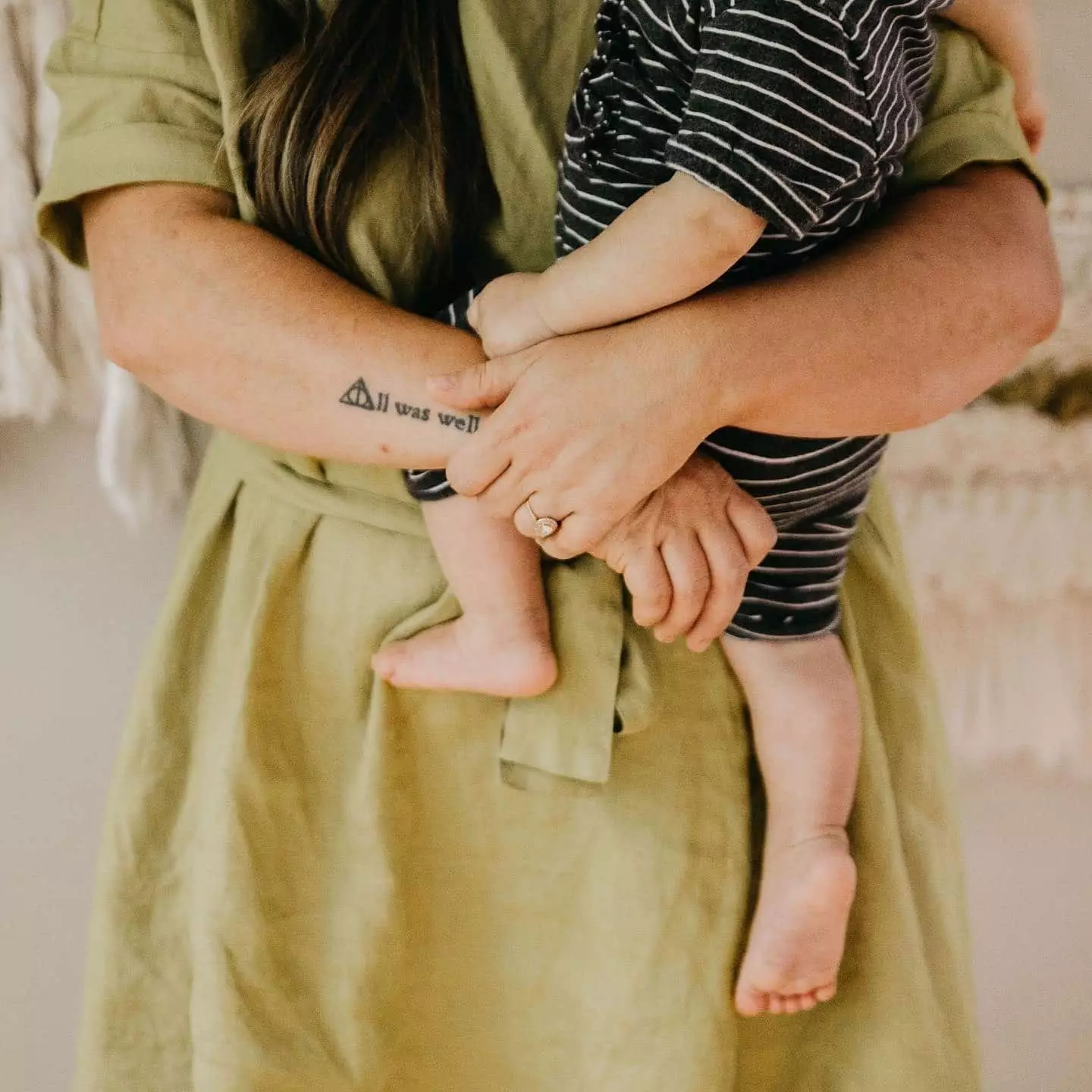In a heartbreaking social media post that captivated the attention of thousands, Ashton Zager shared the devastating news of her youngest son, Hank, who tragically passed away due to a choking incident. Initially perceiving the situation as a simple mishap during snack time, the reality revealed a much graver outcome. It was later reported that a bean had obstructed Hank’s airway rather than an innocent muffin, intensifying the grief and shock experienced by the family. The sheer vulnerability of childhood came into sharp focus—a moment of normality intertwined with unimaginable tragedy.
Zager’s account highlights a situation any parent dreads: the inability to safeguard their child from something as mundane as food. The disturbing nature of her experience serves as a poignant example of life’s fragility, where a snack can rapidly transform into a life-or-death crisis. The emotional weight carried within her narrative—of disbelief, anger, and sorrow—is palpable, as she implores everyone to acknowledge the reality of her loss in a world that feels overwhelmingly unkind.
Zager’s honest depiction of her emergency response reveals crucial insights into how quickly such crises can escalate. Choking, particularly among young children, is an all-too-common occurrence that poses significant threats to safety and life. Alarmingly, choking is the fourth leading cause of unintentional death in children under five years old. Research by the American Academy of Pediatrics (AAP) underscores the severity of this condition, noting that food is responsible for over 50% of choking incidents.
Safeguarding against this hidden peril requires not only awareness but proactive measures from caregivers. The AAP recommends that food should be cut into pieces no larger than half an inch to reduce choking risks. Additionally, teaching children the importance of chewing thoroughly and maintaining vigilance during meal times can act as essential preventive strategies. Yet, despite these measures, tragic incidents can still occur, leaving families reeling from loss and confusion over the unpredictability of life.
As Zager’s poignant narrative unfolds, her sorrow reverberates through the hearts of countless parents who read her words—understanding, even if just partially, the agony of losing a child under such unexpected circumstances. The juxtaposition of a seemingly normal moment against the utter despair of loss creates a powerful emotional landscape where grief persists, revealing the dark truth that life can change in an instant. Her expression of anger and confusion captures the multifaceted nature of grief, encapsulating the inadequacy of conventional consolation offered during such harrowing times.
Moreover, Zager’s plea for acknowledgment rather than the imposition of rationalizations reflects a common sentiment among grieving parents: that not all tragedies come with explanations or justifications. There’s a raw honesty in her insistence that some events defy reasoning, insisting that it is possible for bad things to exist alongside the good, without the need for a greater narrative to frame them. This perspective invites a broader conversation about how society engages with grief and loss, advocating for a more compassionate response when supporting those who experience such profound sorrow.
The tragedy surrounding Hank’s passing serves not only as a wake-up call for cautious parenting but also emphasizes the importance of education regarding choking hazards. Parents and caregivers are urged to be vigilant, understanding both the potential dangers lurking in common foods and the vital preventive actions they can take. By promoting awareness, communities can work together to ensure children are not only loved but also protected from avoidable risks.
Moreover, Zager’s story serves as a sobering reminder that behind every statistic is a family whose life has been irrevocably altered. While we cannot safeguard against every unfortunate event, the pursuit of knowledge and vigilance may help us minimize risks and advocate for safer practices in child care. As we process her heartbreaking narrative, let it inspire an ongoing dialogue around the safety of our children, ensuring that no parent needs to experience a loss so profound.
The loss of Hank Zager echoes within the broader community, reminding us of the delicate balance between the joys of parenthood and the unexpected challenges that can arise. Ashton Zager’s heartfelt reflections serve as an important reminder of the love we owe to our children, as well as the collective responsibility we shoulder to help protect their well-being. As we remember Hank, let’s take steps together to build a world where the safety of every child is prioritized, honoring his memory through collective awareness and action.

